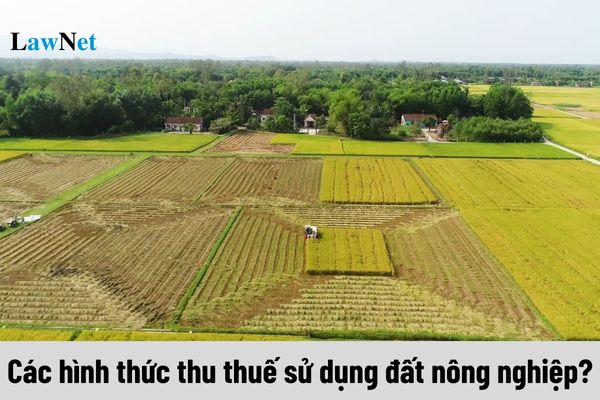What are methods of agricultural land use tax collection in Vietnam?
What are methods of agricultural land use tax collection in Vietnam?
According to Sub-item 3, Section 4 of Circular 89-TC/TCT 1993 which regulates the collection and payment of agricultural land use tax as follows:
IV. ORGANIZATION OF TAX COLLECTION AND PAYMENT
...
3. Tax Collection and Payment.
a. Cash tax collection and payment: When collecting taxes from citizens, tax officers or treasury officers must check and compare the tax amount that is due, as recorded in the notification, with the amount brought by the taxpayer. They must also issue a receipt to the taxpayer and record it in the tax collection monitoring book.
In cases where the taxpayer does not directly submit to the treasury, at the end of each day, the tax collection officer must reconcile the tax collection receipts with the tax amount collected. Every 10 days, the collected tax amount must be paid into the State Treasury. If the collected tax amount reaches 5 million VND or more, it must be paid immediately to the State Treasury. Holding tax funds beyond this prescribed limit without depositing it in the State Treasury is considered tax appropriation.
b. Tax collection and payment by transfer: Tax payment by transfer requires the taxpayer to process the tax payment procedure. The tax authority must open a monitoring book for taxpayers who pay by transfer to periodically compare with the treasury and ensure tax payment compliance.
c. Tax collection in rice (if applicable): The organization for rice collection must directly receive the rice from taxpayers with the presence of a tax office representative to issue tax receipts to the taxpayers. Organizations that purchase tax rice must settle with the State budget during the tax collection season as regulated by the Chairman of the Provincial People's Committee.
...
Thus, the collection and payment of agricultural land use tax can be done in the following forms: cash tax collection, transfer tax collection, and rice collection.

What are methods of agricultural land use tax collection in Vietnam? (Image from the Internet)
How many times a year is agricultural land use tax paid in Vietnam?
According to Article 11 of Decree 74-CP 1993, the regulation is as follows:
Article 11.
The agricultural land use tax year is based on the calendar year, from January 1 to December 31.
The tax is calculated annually but collected once or twice a year depending on the main harvest season of each type of crop in each locality.
Taxpayers can pay tax before the due date, and in the first collection period, they can pay the full year's tax.
At the request of the Director of the Tax Department, the Chairman of the Provincial People's Committee or centrally-run city regulates the start and end times of the tax collection season and announces it to the public.
In special cases where the 1994 agricultural land use tax book has not been completed by the first tax collection season, the Ministry of Finance will provide guidance on provisional collection. The 1994 annual final settlement must be based on the agricultural land use tax book.
Thus, agricultural land use tax is collected once or twice a year depending on the main harvest season of each type of crop in each locality.
Taxpayers can pay tax before the due date and can pay the entire annual tax amount in the first collection period.
Which types of land are subject to agricultural land use tax in Vietnam?
According to Article 2 of the Agricultural Land Use Tax Law 1993 and Article 2 of Decree 74-CP 1993, the types of land subject to agricultural land use tax include:
- Cultivated land which includes land for annual crops, perennial crops, and grassland.
- Land for annual crops is land for plants that have a growth cycle (from planting to harvesting) not exceeding 365 days such as rice, corn, vegetables, peanuts... or plants harvested for one or several years but do not undergo a construction period like sugarcane, banana, sedge, ramie, citronella, pineapple...
- Land for perennial crops is land for plants with a growth cycle exceeding 365 days, planted once but yield for many years and go through a construction period before harvesting like rubber, tea, coffee, orange, mandarin, longan, palm, coconut...
- Grassland is land already used for growing grass for livestock farming.
- Land with water surface for aquaculture is land used for aquaculture or both aquaculture and cultivation, but fundamentally not used for other purposes.
- Plantation land is land afforested and assigned to organizations or individuals for management, care, and exploitation, excluding bare hills and mountains.
In case land is not used for taxable purposes as stipulated in this article, the land user must still pay tax as prescribed by the Agricultural Land Use Tax Law.

